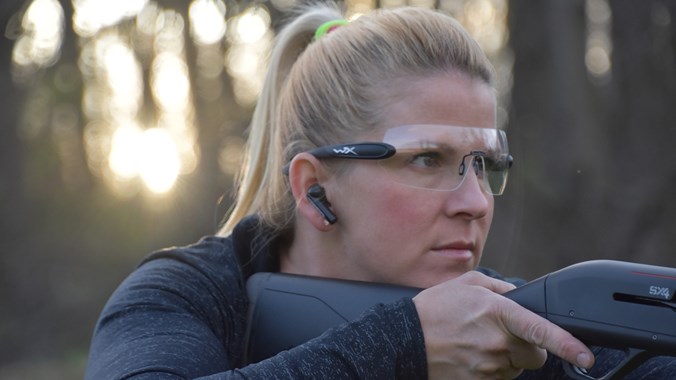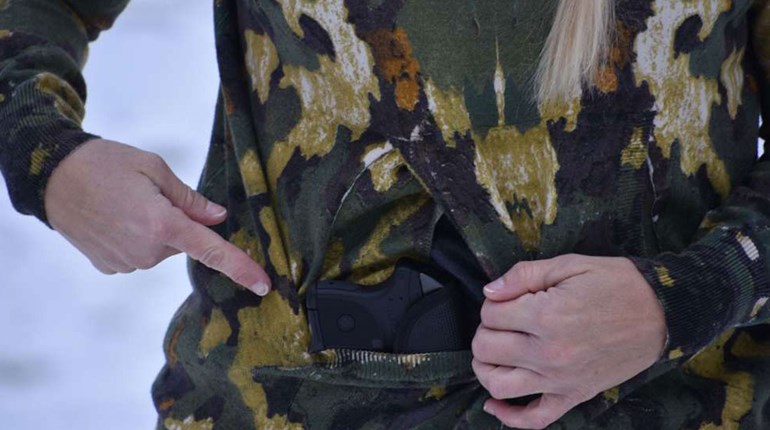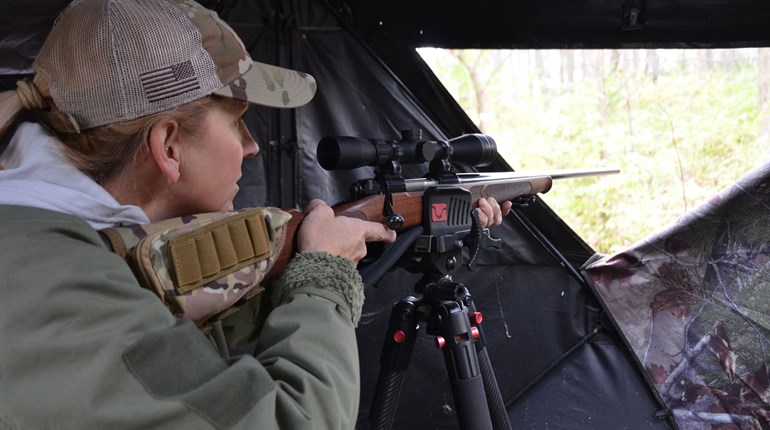
Whether you shoot often or infrequently, protecting your hearing is required to shoot a firearm, and is a safety step you cannot skip. Here are some tips to help you protect your hearing as best as possible, no matter your budget.

Always Have It, Always Wear It!
If you shoot often, or are likely to have impromptu range time, a great way to ensure you always have hearing protection on hand is to purchase foam ear plugs. You can leave them in your vehicle, gear bag, gun case, cleaning kit—anything that goes to the range should contain foam earplugs. I keep them in every backpack, every jacket that I wear on the range, in my glovebox, the compartments in my car doors, and the places mentioned above. This is another way to ensure that you have some with you when traveling and you need to block out noise to rest or sleep. Always having hearing protection means you have no excuse not to wear it. Damage to your hearing means you lose the full use of one of your senses. It is a BIG deal, and something to take seriously.
Pros to wearing foam plugs:
- Foam earplugs will not interfere with your firearm stock (shotgun or rifle).
- You can use foam earplugs to double up your hearing protection. If you’re shooting on an indoor range, it can be very loud. Foam plugs under over-ear hearing protection will help.
- When inserted correctly, foam earplugs block a lot of sound and won’t get pulled off if you unsling a rifle or have to navigate obstacles (think climbing through the brush on a hunt for that shot of a lifetime).
- Foam earplugs are affordable, so if you lose them, it’s not a financial hit.
Cons to wearing foam plugs:
- Some people think foam earplugs are insufficient. Usually this is because they are not used properly.
- They can be difficult for some people to properly insert in the ear canal.
- They can be insufficient alone when shooting indoors or under overhead covers.
- They deteriorate if left in the sun or elements and require constant replacement.
Choose appropriate hearing protection for the firearm you are using. Again, you might need to add layers of hearing protection, depending on where and what firearm you are shooting.
Pistols or firearms that do not require you to place your face/head on the firearm in order to shoot do not interfere with hearing protection. The only time you need to consider what type of hearing protection you use with a pistol is when you consider WHERE you are shooting: enclosed spaces or buildings, or under overhead cover. But with a pistol, you can choose your preference of hearing protection.

Rifles and Shotguns require that you create a firm cheek-weld on the buttstock in order to properly use the sights or optic of the firearm. If you are wearing over-the-ear hearing protection, the cup over your ear on the side of your face that rests on the stock will likely get pushed up, and this can break the seal and make your hearing protection useless. For this reason, doubling your hearing protection is a good policy for rifles and shotguns.
To avoid this, you can roll the bottom of your earlobe up as you don the hearing protection, and then slide the cup around your ear up as high as possible. Depending on the size and style of your over-ear hearing protection, this might not work. This is really the only work-around for hearing protection that gets in the way, aside from using foam plugs.
Pros to over-ear hearing protection:
- They are available in all different shapes and sizes, from youth to adult, some with thinner bands that go over the head, some more padded. The thinner are better when working with a hat or helmet.
- Prices are reasonable.
- Many models offer bluetooth or electronic options.
- They offer great protection from high-decibel sounds.
Cons to over-ear hearing protection:
- They can fail to seal over your ear when using a rifle or shotgun.
- They can be hot and uncomfortable, especially if they push on the temple/frame of your eye protection.
- They can come off when navigating obstacles or unslinging a rifle.

Electronic Options for Hearing Protection
As technology advances, there are more and more options for electronic hearing protection, both in-ear and over-ear. One of the biggest issues with in-ear styles is their ability to seal and stay in your ear. Look for a size and style that fits YOUR EAR. If you try one brand and it’s not your thing, don’t dismiss all electronic hearing protection. You may need to find a brand that has options for the size of the piece that actually fits into your ear.
Pros to electronic hearing protection:
- You can hear! Even while wearing hearing protection, electronics offer the ability to hear what is going on around you and hold conversations. This is valuable if you are a teacher, or student and need to convey information. If you are taking someone new to the range, they can be a huge asset, so the person is not frustrated or does not fail to hear important information.
- Some models are bluetooth-enabled and allow you to listen to music while you train. They can double as hearing protection for mowing your lawn or other noisy tasks where you might want to listen to music or a podcast.
- Some models allow you to communicate with others via radio—handy for chores that require communication during noisy activities.
Cons to electronic hearing protection:
- If you don’t get a pair that fits properly, in-ear models can fall out.
- They require batteries or charging. Look for a pair that holds a long charge.
- The foam of the earpieces on in-ear models can compress over time and become hard from ear wax and extended use, requiring replacement.
- The really good ones are expensive.
No matter what type of hearing protection you decide to use on the range, having it with you and using it properly are two key elements to protecting your hearing.















































